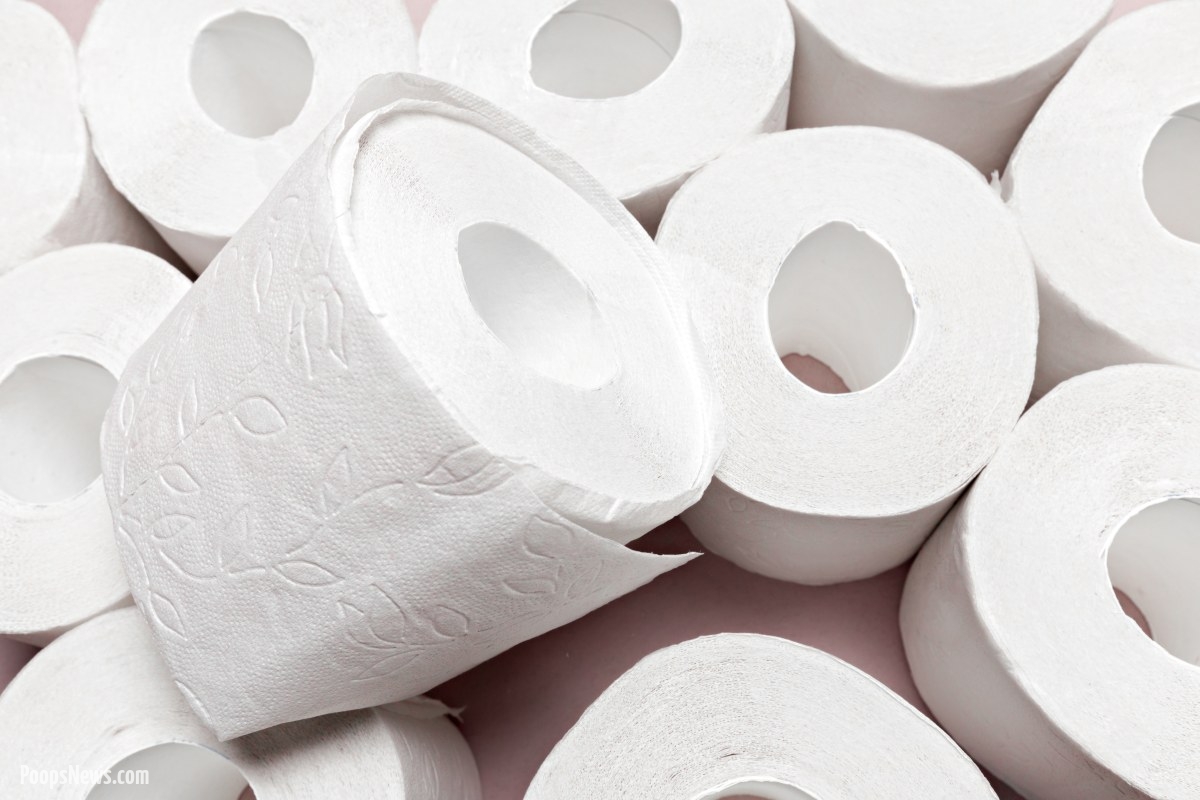In Japan, the game of “Toilet Paper Tower” once held the nation’s collective imagination. A spectator sport like no other, this peculiar competition revolved around building towering structures from rolls of toilet paper. Initially, it attracted millions with its simplicity and, well, lofty ambitions. Players stacked toilet paper rolls as high as possible, with the victor often being the one whose physical height outmatched their competitor’s — because let’s face it, gravity was a merciless umpire in this game. But recent reports suggest that interest in this toilet-paper-based phenomenon has seen a dramatic decline.
Once the darling of Japanese late-night TV and the subject of endless betting pools, “Toilet Paper Tower” has faced stiff competition from the advent of more “sophisticated” pursuits, such as extreme ironing and professional pillow fighting. The heart-wrenching spectacle of toilet paper cascading to the ground in a soft, pitiful heap no longer holds the same emotional weight for modern audiences who have grown numb to the fragility of tissue engineering.
Yet, in a dramatic twist that could only happen in a world where the absurd is revered, the Federation of Toilet Paper Tower Clubs (FTPTC) has announced a shocking revision to the game’s rules. Could these new changes, involving advanced drone technology, revive the sport and restore its once hallowed place in the annals of Japanese entertainment?
The Golden Age of Toilet Paper Towers
To truly appreciate the rise and fall of this peculiar sport, we must journey back to the early 2000s, when the game reached its zenith. Crowds would gather in Tokyo’s arenas, eagerly watching as competitors gingerly stacked roll after roll, all while balancing precariously on step ladders. The tension was palpable as each roll was placed — would it hold, or would it collapse under the cruel gaze of physics?
Back then, much of the game’s charm lay in its simplicity. Players, armed with nothing but their height and hands, fought against the ticking clock, gravity, and their own trembling knees. Commentators whispered like golf announcers, their tones hushed as if any loud noise would send the towers tumbling prematurely. A solitary bead of sweat trickling down a competitor’s brow was enough to send fans into a frenzy of anticipation.
The most famous Toilet Paper Tower showdown remains the legendary 2009 final between Kiyoshi “Paper Crane” Nakamura and Takeshi “Cloud Reacher” Yamamoto, whose epic battle was broadcast to 37 million homes. The stakes were higher than the towers themselves, and Kiyoshi’s narrow victory was etched into Japanese sports history like a monument built from quilted 2-ply. Fans wept, toilets across Japan overflowed with pride, and Yamamoto’s tragic post-match interview — where he blamed a rogue gust of air conditioning for his defeat — became the stuff of legend.
But then, like all empires built upon fragile foundations, Toilet Paper Tower’s popularity began to unravel.
The Fall: When Interest Went Down the Drain
In the late 2010s, the sport began to face challenges. With no real innovation, audiences grew tired of watching the same predictable pile-ups. Newer generations, raised on a diet of digital distractions, failed to see the appeal in stacking paper products. What was once a dynamic, thrilling game became, in the eyes of many, a repetitive exercise in futility.
By 2021, the game had become a shadow of its former self. Arena seats were left empty, and sponsorship deals dried up faster than the world’s supply of toilet paper during a pandemic. As interest waned, so did the professional players’ egos, many of whom retired to the serene life of bathroom fixture sales.
However, just when it seemed like the sport had seen its last roll fall, the FTPTC revealed a plan that would — quite literally — elevate the game to new heights. Their solution? Bring drones into the mix.
The Drone Invasion: A Revolutionary Shift
Faced with the crumbling remains of their beloved sport, the Federation decided to introduce an element of modern technology that would be hard to ignore: drones. As of 2024, players are no longer limited to the strength of their arms or the endurance of their calf muscles. The new rules allow competitors to employ drones — yes, drones! — to assist in stacking the towers.
In what many are calling a desperate move, the FTPTC insists that this innovation will not only restore Toilet Paper Tower’s former glory but also add a new layer of skill, strategy, and aerial choreography. Because nothing says “competitive spirit” like a remote-controlled quadcopter precariously hoisting a roll of Charmin Ultra Soft to unimaginable heights.
“We believe the future of Toilet Paper Tower lies in the skies”, said FTPTC president Hiroshi Watanabe during a press conference that was, oddly enough, held in a public restroom. “This is no longer just about building towers; it’s about precision, drone control, and adapting to the challenges of altitude. We foresee Toilet Paper Tower becoming a global phenomenon once again. The potential for sponsorship deals with drone manufacturers and toilet paper companies is limitless”.
Indeed, the sponsorship race has already begun, with major toilet paper brands like “Soft Embrace” and “Heavenly 3-Ply” vying for the chance to sponsor teams. Even tech giants are getting in on the action. Rumor has it that drone manufacturer “SkySlick” has developed a model specifically designed to handle the aerodynamic complexities of toilet paper — a groundbreaking advancement for aviation and bathroom aficionados alike.
High Stakes, Higher Towers: The Multi-Million Dollar Industry
If you thought competitive toilet paper stacking was just an amusing pastime, you’d be woefully mistaken. Behind the scenes, this sport has turned into a multi-million-dollar industry. From betting syndicates to lucrative broadcasting rights and endorsement deals, Toilet Paper Tower has always had an undercurrent of high-stakes financial intrigue.
In fact, it’s estimated that the global betting market surrounding Toilet Paper Tower matches is worth over $400 million annually, with some of the largest bets placed not on the players themselves, but on which brand of toilet paper will be used. Naturally, 2-ply tends to attract the more cautious gamblers, while those with a taste for risk often bet on competitors brave enough to stack with ultra-thin 1-ply. Now, with drones in the mix, there’s a whole new level of complexity to consider — will the weight of the drone affect the stability of the tower? Could a rogue gust of wind knock both drone and rolls off course?
Television networks, desperate for a new hit in a post-apocalyptic reality-TV landscape, are reportedly in talks to broadcast drone-assisted matches globally. Experts predict that this technological twist could generate a whole new wave of Toilet Paper Tower fever, drawing in younger, tech-savvy audiences who have never known the joy of a properly executed “flutter stack”.
The Criticisms: Is Drone Assistance Cheating?
Of course, no good change comes without its detractors. Purists of the game, those who grew up watching the slow and deliberate art of manual toilet paper stacking, have voiced their concerns that drone-assisted stacking is a form of cheating.
“I remember a time when it was just a man, a ladder, and a dream”, lamented Kenji “Ply Master” Tanaka, a retired Toilet Paper Tower champion turned motivational speaker. “Now, they want to bring machines into it? It’s a travesty. This sport is about human endurance and the delicate art of balance. What next? Robot referees?”
Tanaka’s passionate objections have sparked an online debate, with many questioning whether drone assistance undermines the very essence of the game. Will this new format favor those with access to better technology, rather than pure skill? And how will the FTPTC regulate drone interference? After all, the introduction of any airborne element poses the risk of mid-air collisions, drone sabotage, or, heaven forbid, toilet paper unraveling mid-flight.
The Future: A Towering Legacy Rebuilt?
As the first drone-assisted Toilet Paper Tower Championship looms on the horizon, anticipation is growing. Will the drones bring back the sport’s long-lost thrill? Or will they prove to be a high-tech distraction, leaving the game’s spirit in tatters, like a roll of cheap 1-ply during a national shortage?
Whatever the outcome, one thing is certain: the future of toilet paper stacking, much like its past, will continue to baffle, bewilder, and bemuse. Whether we’re looking up at a 30-foot tower of tissue or watching drones perform pirouettes around a roll of quilted cotton, there’s no denying the unique charm of Toilet Paper Tower. Only time will tell if this newfound technological boost will send the sport to new heights — or if it’s simply a case of too many rolls, not enough substance.





